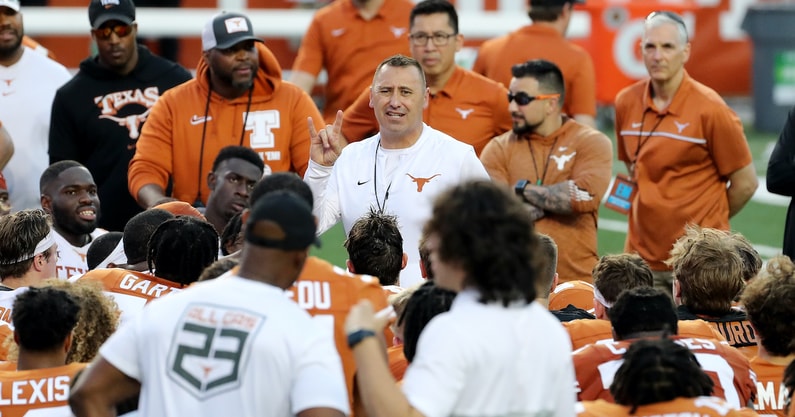Steve Sarkisian addresses the current state of player safety across college football

The impetus for player safety has driven any number of rule changes in college football in the last decade — and before that. And on the whole, things are actually in a pretty good spot, at least as Texas head coach Steve Sarkisian sees it.
Sarkisian, a head coach and former BYU quarterback, understands the desire not to lose the physicality and hitting that are paramount to the sport. But he doesn’t think that’s really been lost and the rule changes have tended to isolate a specific play or action as being illegal.
“Clearly, I think they’ve done a nice job of implementing different rules in game, of what you can and can’t do. And I’m not just talking about head injuries,” Sarkisian said. “They’ve — crack back blocks, cut blocking, different things of that nature that are trying to prevent injuries.”
CLICK HERE to subscribe for FREE to the On3 YouTube channel
And it’s not just in game where rule changes have come around to keep players healthier. Practice rules have also been altered over the years.
“We instituted some different practice habits and rules and the way we practice,” Sarkisian said. “Whether it’s the number of consecutive padded practices or specific drills that we can or cannot do.”
Sarkisian went on to explain that the real challenge and responsibility with rule changes lies with the coaches. It’s on them to explain and teach the rules to their players — and drill them on how to play within the constraints rules create.
This is worth it, though, given the stakes. On top of the fact that the idea is to keep players healthier and safer, the penalties assessed for a targeting — 15 yards, an ejection — or a crack back block hurt a team on the field.
Top 10
- 1New
Ryan Williams, Whit Weeks
Stars status updated for Bama-LSU
- 2
Brian Kelly
LSU firing letter obtained
- 3Trending
Tre Wilson injury
WR status vs Kentucky revealed
- 4Hot
Auburn announces QB1
Latest on Arnold, Daniels
- 5
College Football Playoff
The eye test for top teams
Get the Daily On3 Newsletter in your inbox every morning
By clicking "Subscribe to Newsletter", I agree to On3's Privacy Notice, Terms, and use of my personal information described therein.
“We have to assume that responsibility to make sure that we put our players in the best position to execute and play within the guidelines of the rules. But also, from a team perspective, because those are some pretty hefty fouls. When you lose a player for the remainder of a game or you lose a player for the first half of the next game, those are — that’s a hefty foul that you endure. So, we’re constantly trying to teach. But in the end, I do think it’s for the betterment of our game,” Sarkisian said.
The final point Sarkisian made, about betterment of the game, is at the core of the desire to make rules to protect players and why people might oppose them.
Football can be better if players stay healthier and fresher and can be on the field more — unless the game goes too far and stops resembling the sport we now know.
It’s a delicate balance.
“I’ve said this before: We’ve got a beautiful game, and none of us want our game to go away in such a manner that ‘Man, what happened to football?'” Sarkisian said. “It is still a contact sport. It is still a physical sport. But there are ways to make it safe and I think that whether it’s the NFL, college football, high school football, I think we’re constantly working at that, we’re looking at that, and ways to implement things that can continue to keep our game safe, but yet allow the game to flourish and grow because it is a beautiful game. There’s something unique about our game that has so many positives about it. I think sometimes injuries, especially head injuries, take the spotlight, but man there’s a lot of great things that happen because of the game of football.”